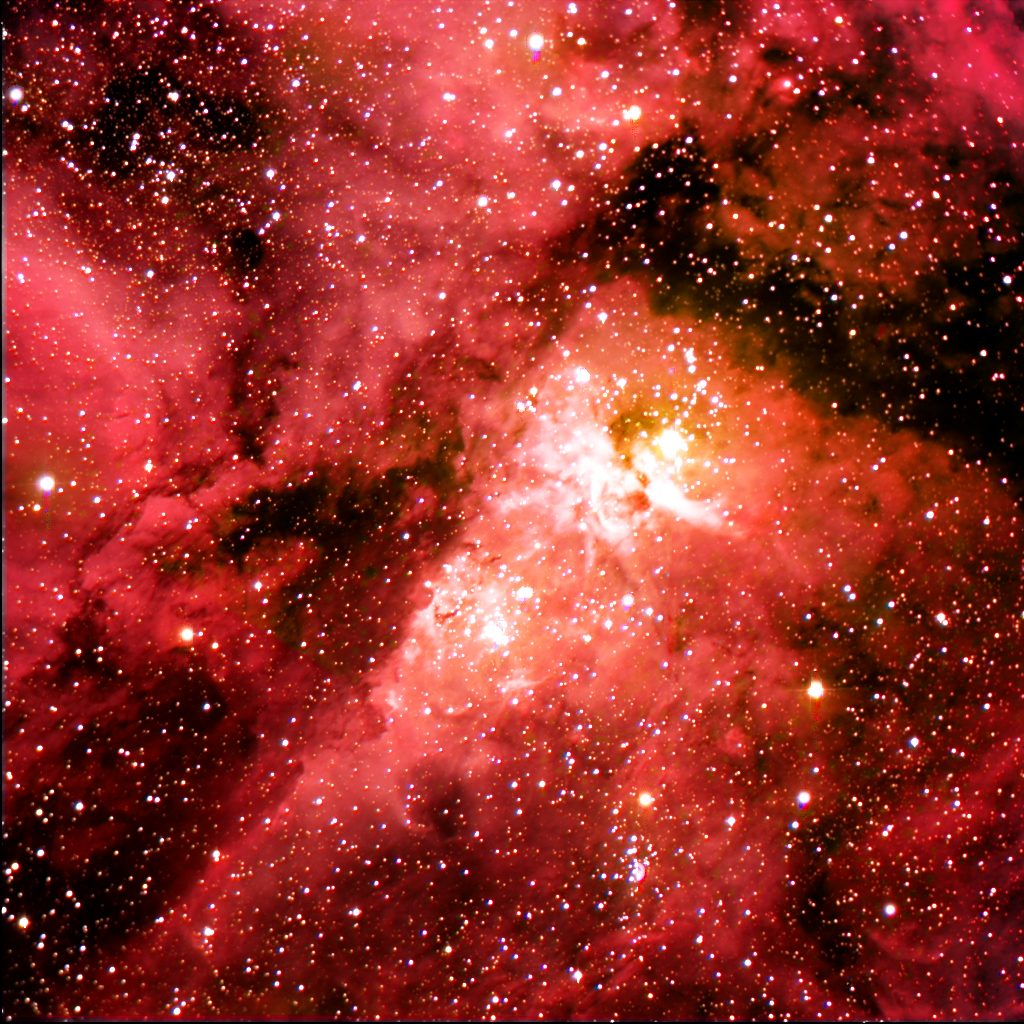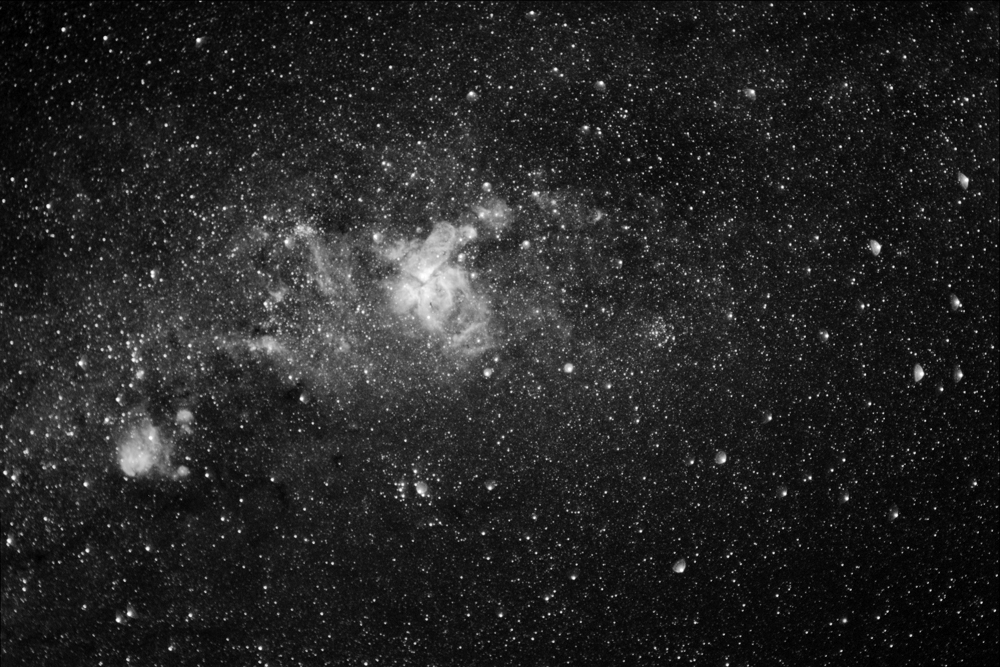
Combination of 9, 3 minute exposures using an H-alpha filter.
SBIG ST-8XE CCD. 35mm f/2.8 Nikkon lens.

The Keyhole Nebula (also sometimes called the Eta Carina Nebula) is the brightest emission nebulae in the sky. It is easily visible to the naked eye as a cloudy patch in the Milky Way, not far from the Southern Cross. The Keyhole nebula is definitely one of the top 5 objects of the southern skies. Even in binoculars, the field is strewn with patches of light and dark nebulosity. In a telescope the view is magnificent. Situated in the heart of one of the richest portions of the Milky Way outside of Sagittarius, the entire region abounds in clusters and double stars. Interestingly however, there are few emission nebulae. It is as though all of the nebulae in the region had been gathered up together to make one stupendous object!
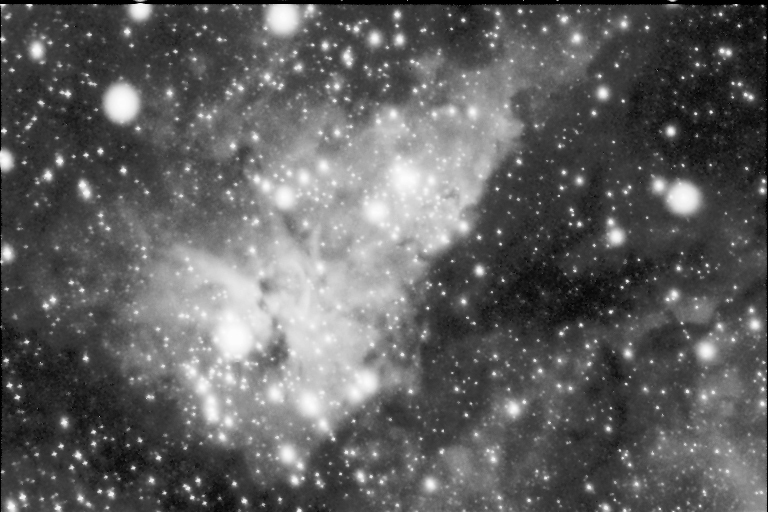
Adding a 10 minute exposure to the first image allows for more of the nebulosity to be visible. Unfortunately, such a long exposure results in many of the brighter stars blooming considerably. The star with the longest bloom streak is the 5th magnitude hypermassive star eta carinae. About 150 years ago this star was the second brightest star in the sky as it underwent a nova-like outburst that lasted many years. A 10" telescope will reveal the tiny nebula surrounding this star, called the Homuclus, which is material that has been ejected by the star.
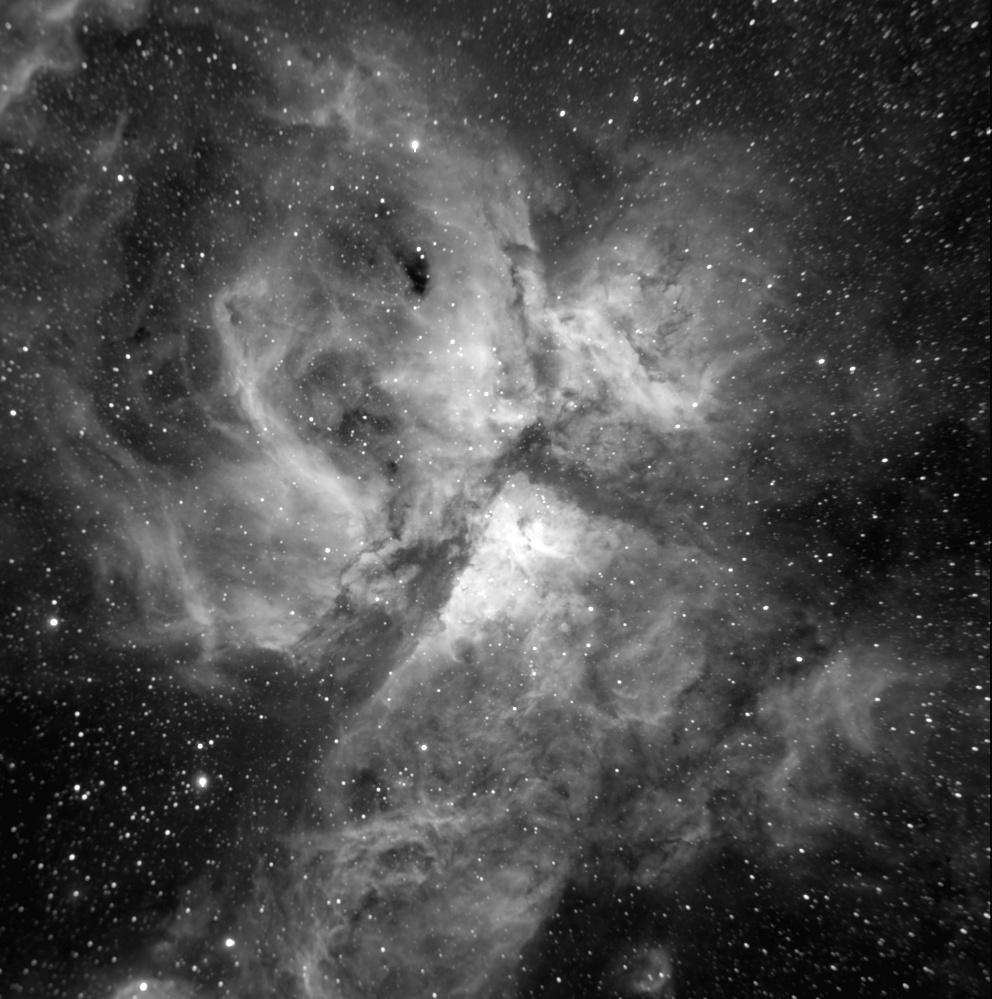
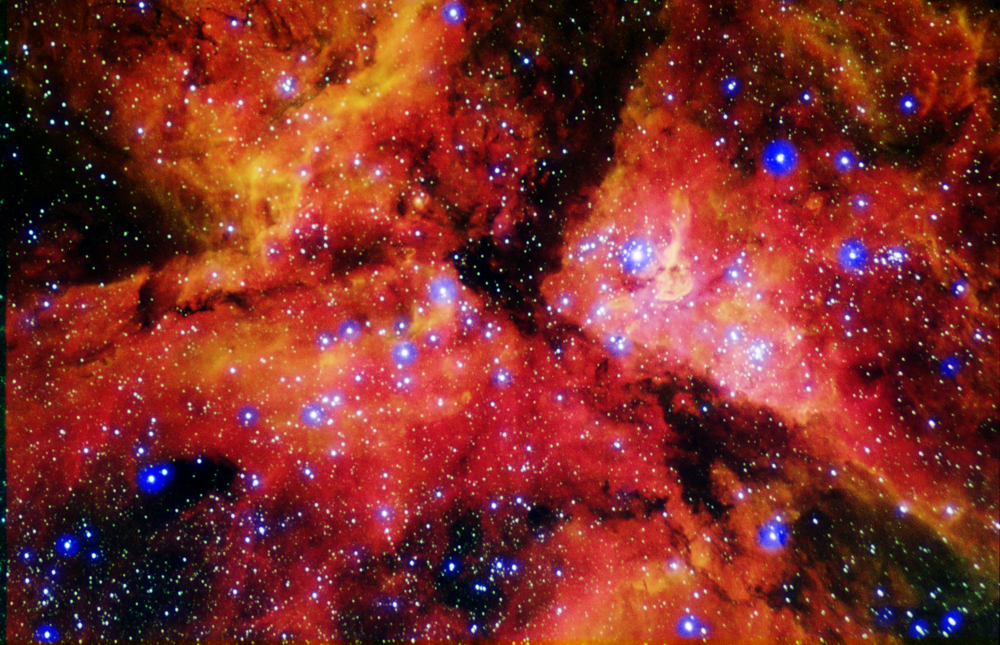
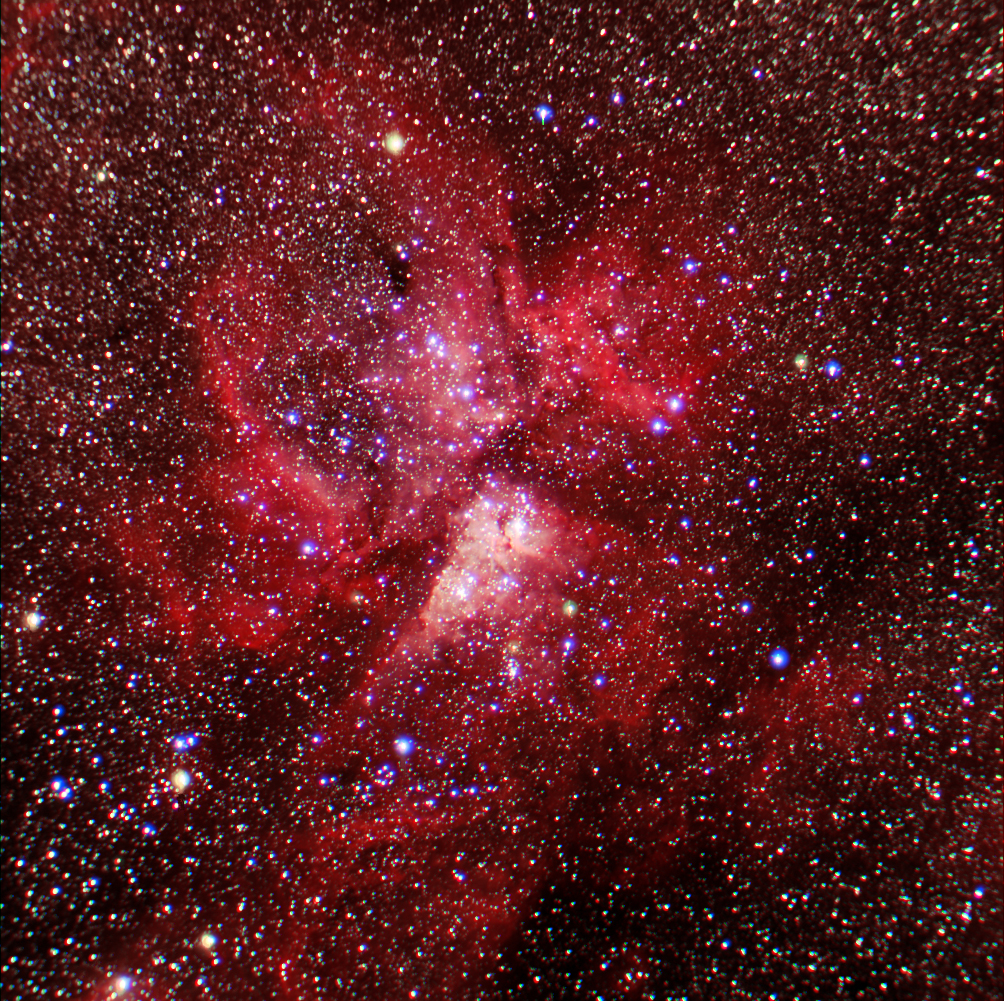
Combining the above images can give interesting results, depending on how they are combined. A couple of ways are shown below. Notice how when the H-alpha image is used as the luminance channel, the stars are much reduced.
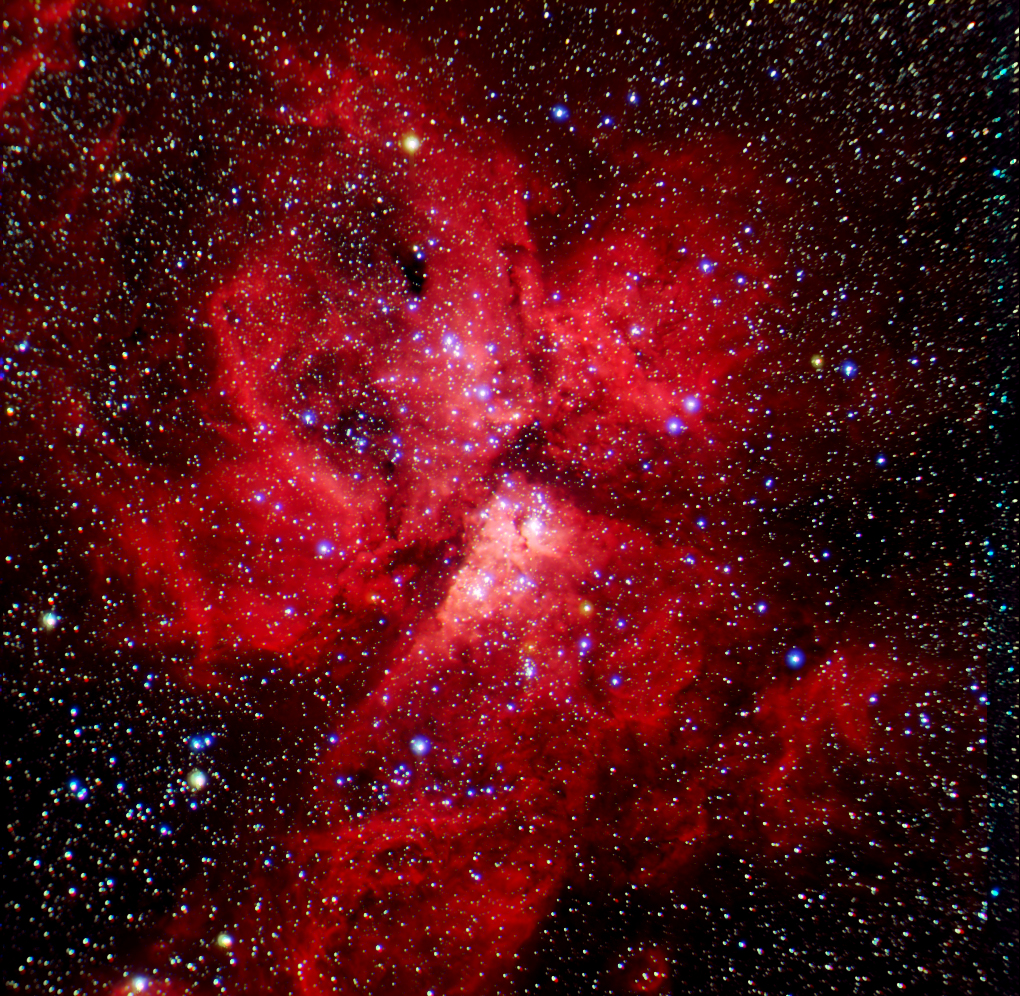
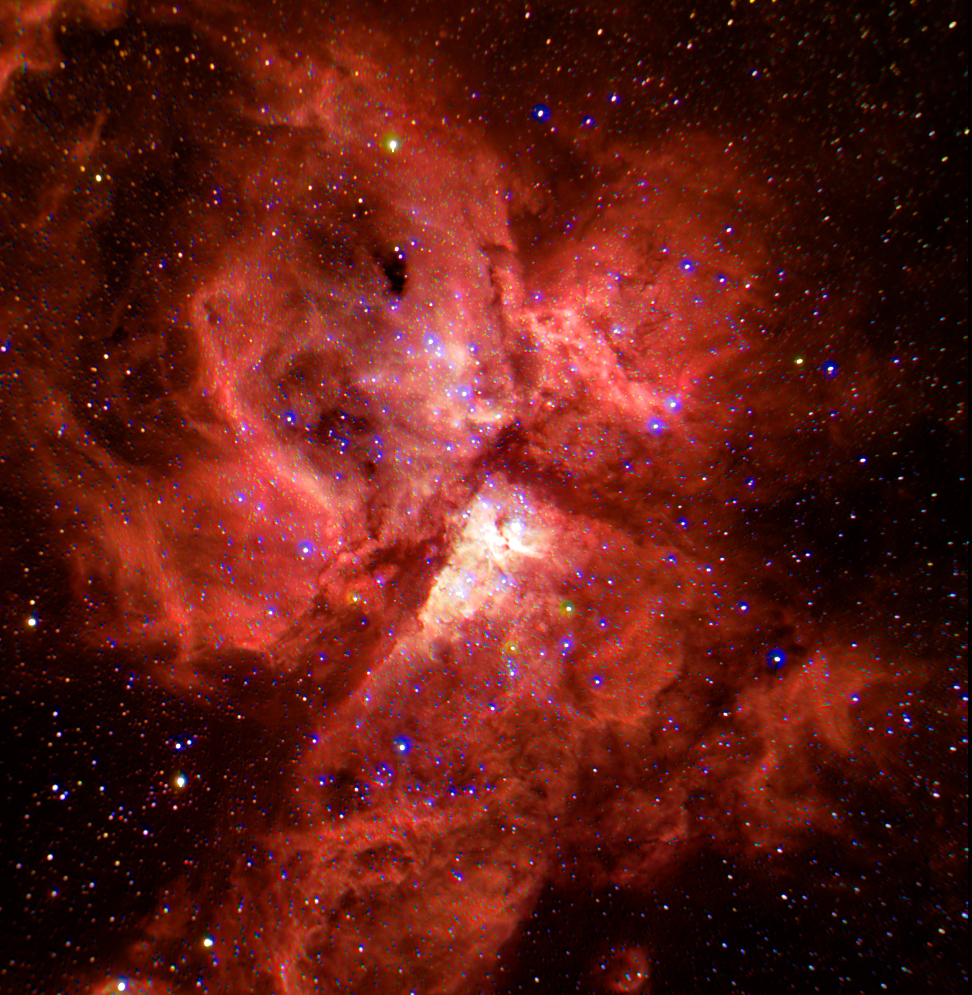
In an effort to maximise the contribution to the visibility of the nebula from the H-alpha while keeping a good colour balance and maximising the visibility of the stars, I combined the RGB image with the one using the H-alpha filter as the red channel. This is shown below, and in my opinion it gives the most pleasing results.
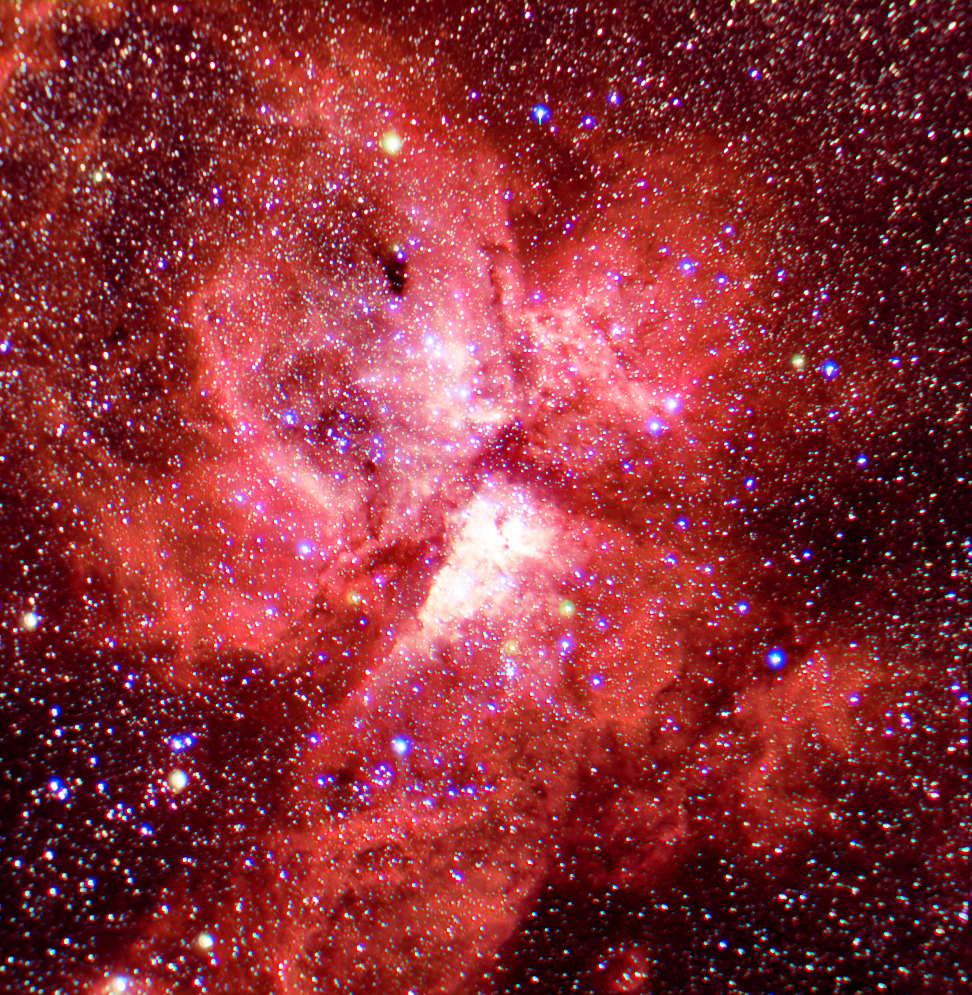
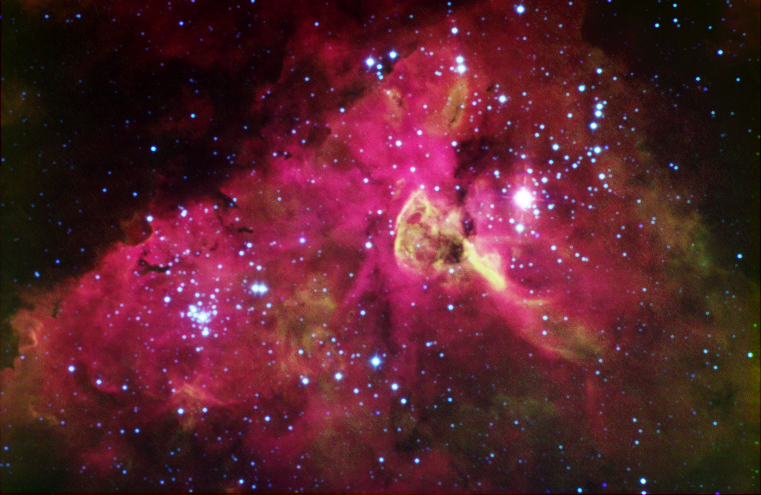
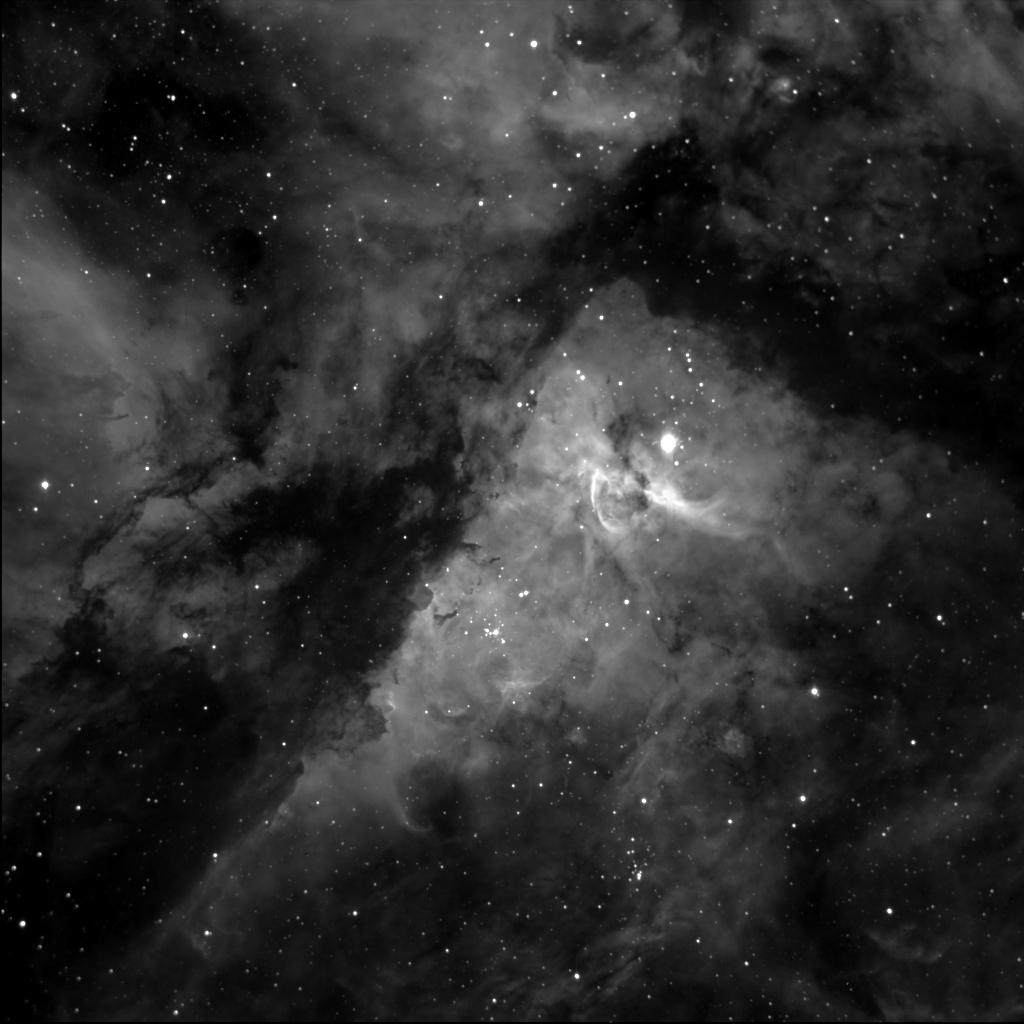
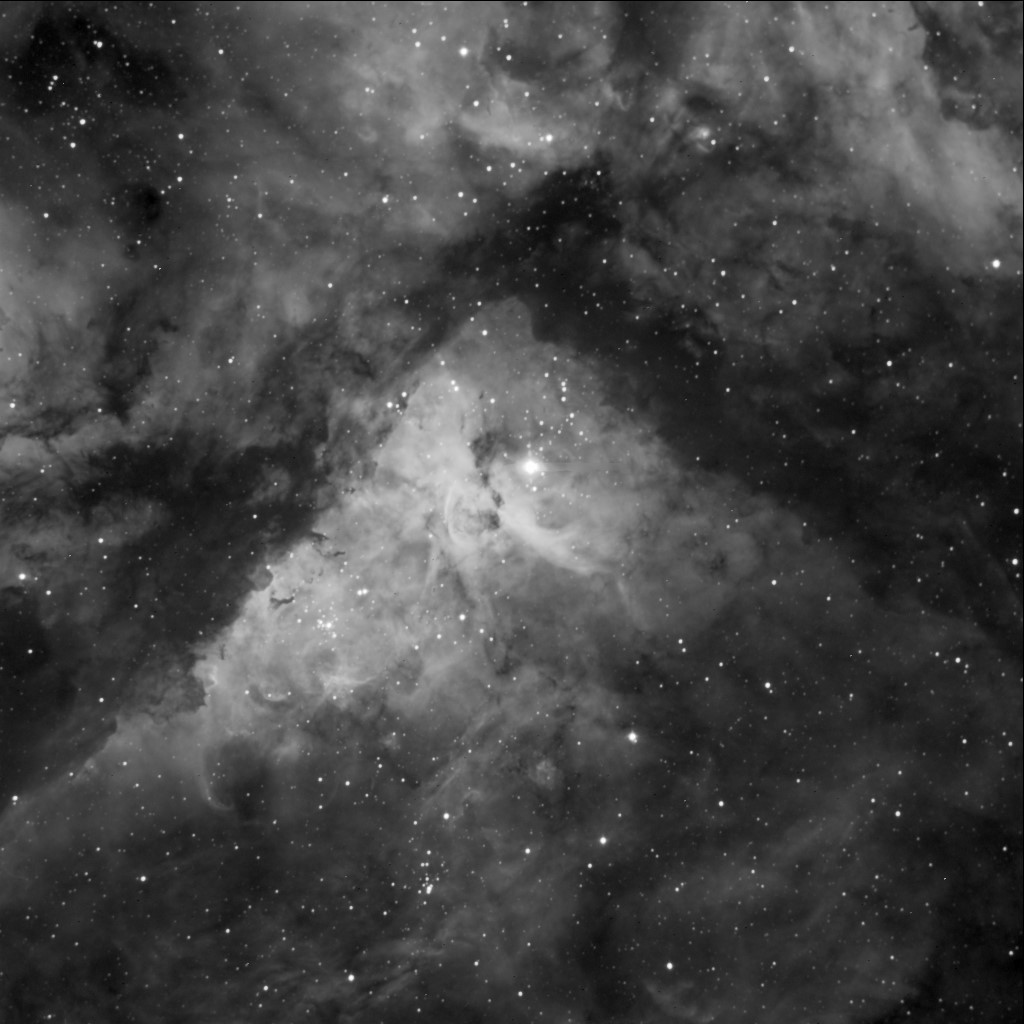
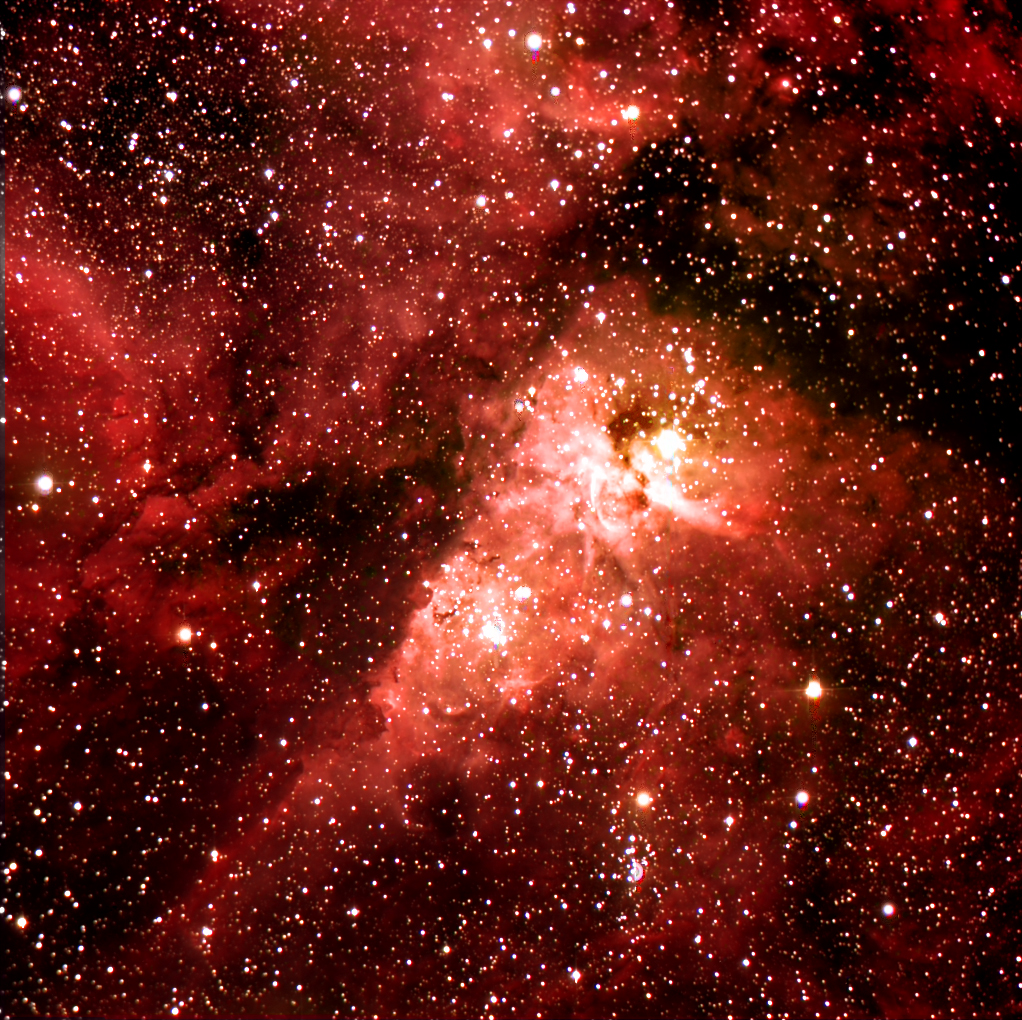
A big problem in using a CCD to image NGC 3372 is that unfiltered, eta carina is so bright that it blooms very badly unless the exposure is kept very short. Northern hemisphere observers who have tried to image M42 with a CCD will understand the problem. Even with only 60 exposure, the star had bloomed very badly and the bloom could not be satisfactorily removed. In view of this, I tried using the H-alpha image as the luminance channel instead of the unfiltered image. The result is shown below.
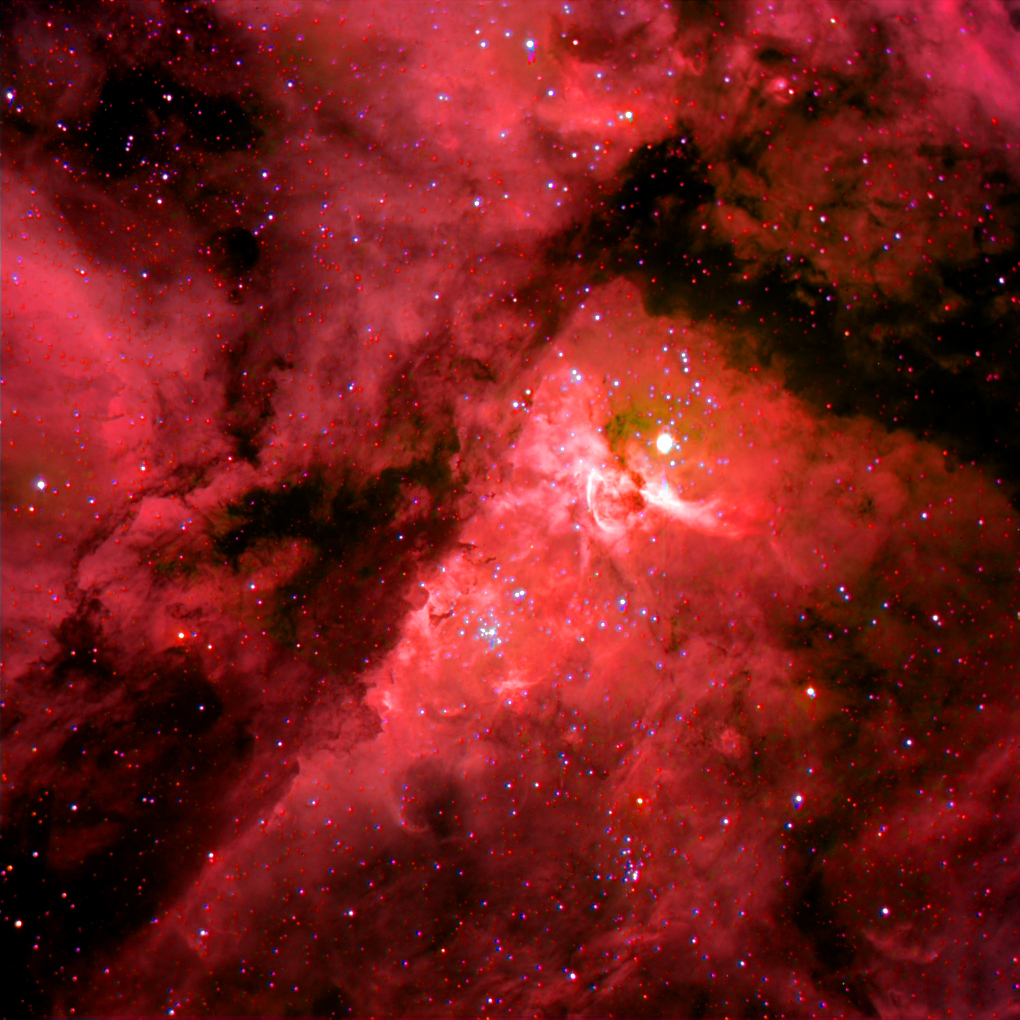
The result was not too bad, but a better result was obtained when the above image was combined with the CRGB image.
